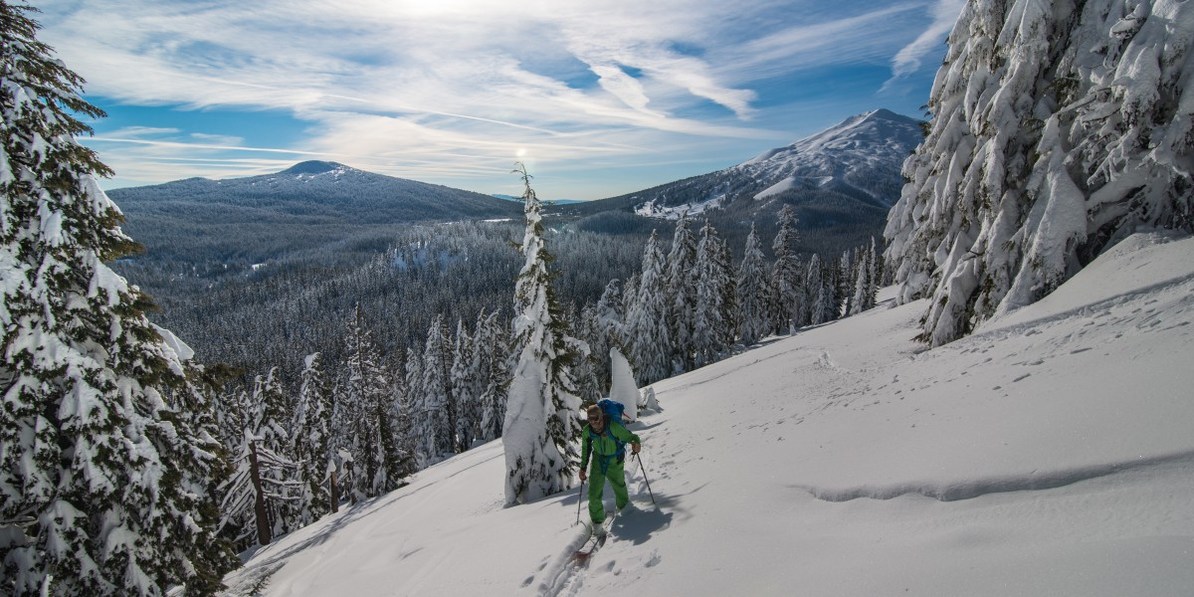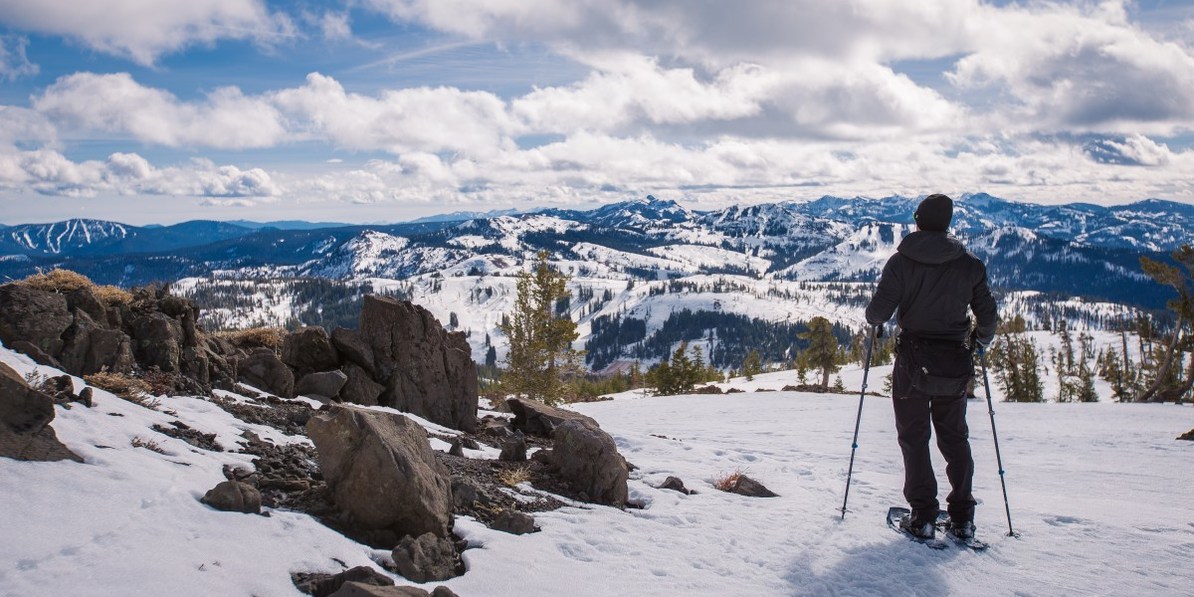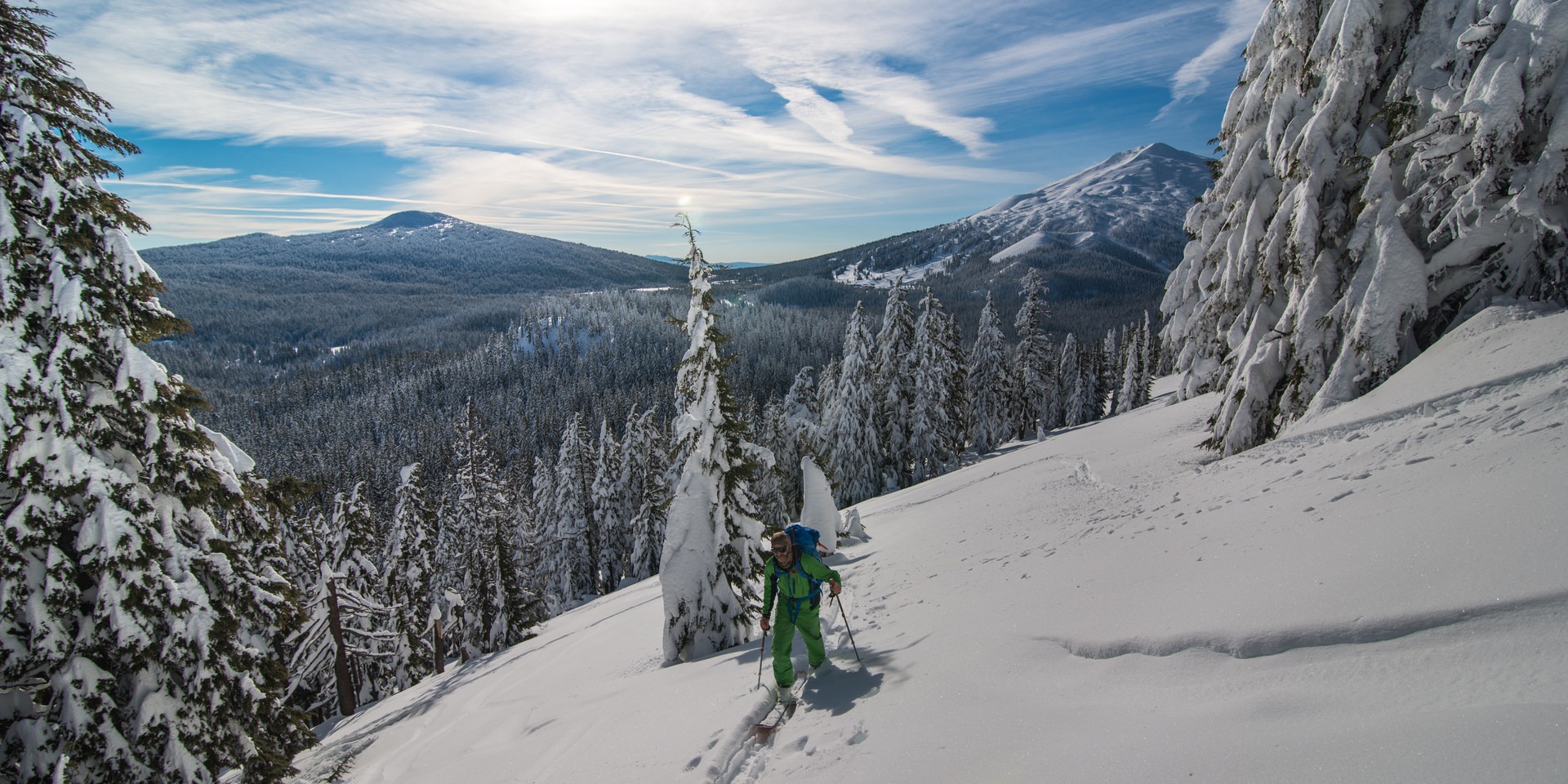You are here
Outdoor Project is thrilled to announce our partnership with the Winter Wildlands Alliance, a national nonprofit organization dedicated to promoting and preserving winter wildlands and a quality human-powered snowsports experience on public lands. WWA is just one of the many organizations working to protect the places where we adventure, and we're excited to do all we can to help.
Meet Winter Wildlands Alliance
WWA works with skiers and snowshoers across the country to help them protect the places where they play. As advocates, Winter Wildlands Alliance builds relationships with grassroots snowsports and conservation groups, providing networking opportunities and useful resources. WWA publicizes national issues impacting human-powered snowsports and maintains a national presence by communicating regularly with Forest Service, Park Service, and Congressional representatives and by commenting on draft management plans and encouraging agencies to adopt skier-friendly policies. They support a network of grassroots snowsports groups, helping local users connect and influence the issues affecting their favorite backcountry areas, and they provide opportunities for groups and individuals alike to get engaged by issuing action alerts about issues relevant to the winter backcountry. With boots on the ground, WWA gives back to the land through their stewardship programs, and they get 30,000 kids outside each year to experience the joy of winter through SnowSchool. In the end, the people at WWA are all skiers themselves, and in 2005 they organized their first annual Backcountry Film Festival to celebrate the human-powered experience. The festival now tours each winter to more than 100 locations across the world and raises funds and awareness for local groups working on advocacy, snow safety, and outdoor education programs.

Notable Projects
- The Forest Service recently finalized a new rule, the Over-Snow Vehicle Rule, which requires National Forests to designate routes and areas where over-snow vehicles are allowed and prohibits winter motorized travel in places that are not specifically designated and shown on a map as open. This new rule is the direct result of WWA's efforts to get the Forest Service to manage snowmobiles under the same guidelines used for all other off-road vehicles on national forest lands. For skiers who value quiet winter wildlands, the over-snow vehicle rule is an opportunity to bring balance to the backcountry and to protect places that are valued for human-powered winter recreation.
- Working with four coalition partners, WWA’s 14-year campaign to protect Yellowstone National Park resulted in a long-term winter use plan. This new management plan eliminated the noisiest and most polluting vehicles and put a reasonable cap on total over-snow vehicle use. Its implementation led to a remarkable recovery for the unique winter ecosystem, wildlife, and visitor enjoyment in our nation’s first national park and our most iconic winter sanctuary.
- WWA is a founding member of the Outdoor Alliance. The six membership organizations of Outdoor Alliance – Access Fund, American Canoe Association, American Whitewater, International Mountain Bicycling Association, Mountaineers, and Winter Wildlands Alliance – have a long tradition of protecting public lands, waters and snowscapes while preserving public access to America’s outdoors to ensure there are trails to ride, rivers to paddle, peaks to ski and crags to climb. There are many public lands issues that are important, regardless of how you like to get outside, and members of Outdoor Alliance have found they are often more effective when they unify the voice of the broader outdoor recreation community.
- Working with local partners, WWA has helped to protect more than three million acres of public lands for human-powered activities.
Projects in the Works
Now that the Over-Snow Vehicle Rule is in place, WWA is working with skiers and snowshoers across the country to advocate for the protection of important non-motorized recreation areas during the winter travel planning process. Even though winter travel planning is focused on figuring out which trails and areas should be open for snowmobiles, it also presents an opportunity for skiers and snowshoers to get the Forest Service to set aside areas that are important for non-motorized recreation. By showing that certain places provide high quality human-powered recreation opportunities, WWA hopes agencies will designate these places as non-motorized in their winter travel plans so that these opportunities are protected for years to come.
In addition, WWA is always looking for new potential SnowSchool sites. They work with local organizations to provide the resources necessary to start winter programs that reach kids in a variety of diverse communities. Visit their website to learn more.
SnowSchool
WWA believes all young people should have the opportunity to experience the natural world in a real and meaningful way. At its core, SnowSchool is about creating outdoor experiences that expand horizons and connect people to nature. The program makes a big impact on students at a young age, and WWA has stacks and stacks of thank-you letters from kids that detail how “this was the best field trip ever” or how much they want to go snowshoeing again with their family. Here’s just one example:
“Dear SnowSchool- Thank you so much for letting us come and have a great time, which I did. I learned all about the outdoors and even more about snow. I also learned how to put on snowshoes but am still working on it! I had an awesome time and will remember it forever.” –Bryn, Fourth-Grade Student
SnowSchool reaches thousands of underserved students each winter, and kids like Bryn are often first time visitors to the wild winter landscape. Such positive experiences at a young age foster the development of ecological literacy and open the door to a lifetime of outdoor exploration.

Challenges
Prior to the Over-Snow Vehicle Rule, there wasn’t really a policy tool in place that skiers and snowshoers could use to protect their favorite backcountry areas from increasing motorized use. Now that the Forest Service has to actually designate where snowmobiles are and aren’t allowed, WAA has a process they can work within to protect areas for non-motorized winter activities. One of the biggest challenges in doing this, however, is motivating the human-powered recreation community to get involved in what can be a long and tedious process. We’d all rather go skiing than sit through a meeting, but it’s really important for skiers and snowshoers to get involved in Forest Service management decisions to make sure our community is represented and has a voice in the process. WWA relies on local partners for a lot of the work in this process. While WWA can provide a big-picture and policy expertise, local partners provide the on-the-ground knowledge of an area that makes the case for why it should be protected. In the end, protecting the places where we play depends on the efforts of local users who are passionate about their own backyards.
Get Involved
I asked Hilary Eisne, WWA's Recreation Planning Coordinator, how Outdoor Project could help, and this is what she had to say.
We're always looking for ways to connect with skiers and snowshoers across the country, and Outdoor Project is a great opportunity for us to reach new people who care about the backcountry and like to play outside in the winter. Outdoor Project provides beta that helps us learn more about backcountry areas where people ski and snowshoe, and through Outdoor Project we hope to connect with people who would like to protect these places. Right now the human-powered recreation community tends to be conspicuously absent from the discussion when land management decisions are made, even though these decisions affect how every one of us uses public lands. We hope that through Outdoor Project we will be able to rally people who care about protecting the backcountry and get the quiet recreation community to make some noise!
The first thing to do is visit the Winter Wildlands Alliance website, sign up for their newsletter and email list, and become a member. Then, find them on Facebook and Instagram to find out what they're up to on a day-to-day basis. If people have concerns or questions about travel planning on specific National Forests they can reach out to WWA's Recreation Planning Coordinator, Hilary Eisen, at heisen@winterwildlands.org. Finally, don’t forget to check out the Backcountry Film Festival tour schedule to see if and when the festival is coming to your town!
-----
CALIFORNIA RESIDENTS: SPECIAL MEETING ANNOUNCEMENT
Several National Forests in California are in the process of writing travel management plans that will designate routes and areas that are open to snowmobiles. Those areas that are not specifically designated as open in the final plans will closed to winter motorized use. Because backcountry skiers typically prefer to ski in areas where there are not snowmobiles, these travel planning processes are an opportunity for skiers to speak up to protect the places where they play. Unless the places you visit are entirely within Wilderness there is no guarantee that they will remain non-motorized in the future unless they are designated as such in the travel plan and that won't happen unless skiers get involved. Right now the Tahoe and Eldorado National Forests are accepting public comments to help guide their planning efforts. To learn more about how to get involved visit the Winter Wildlands Alliance take action page.




Comments
Sign In and share them.